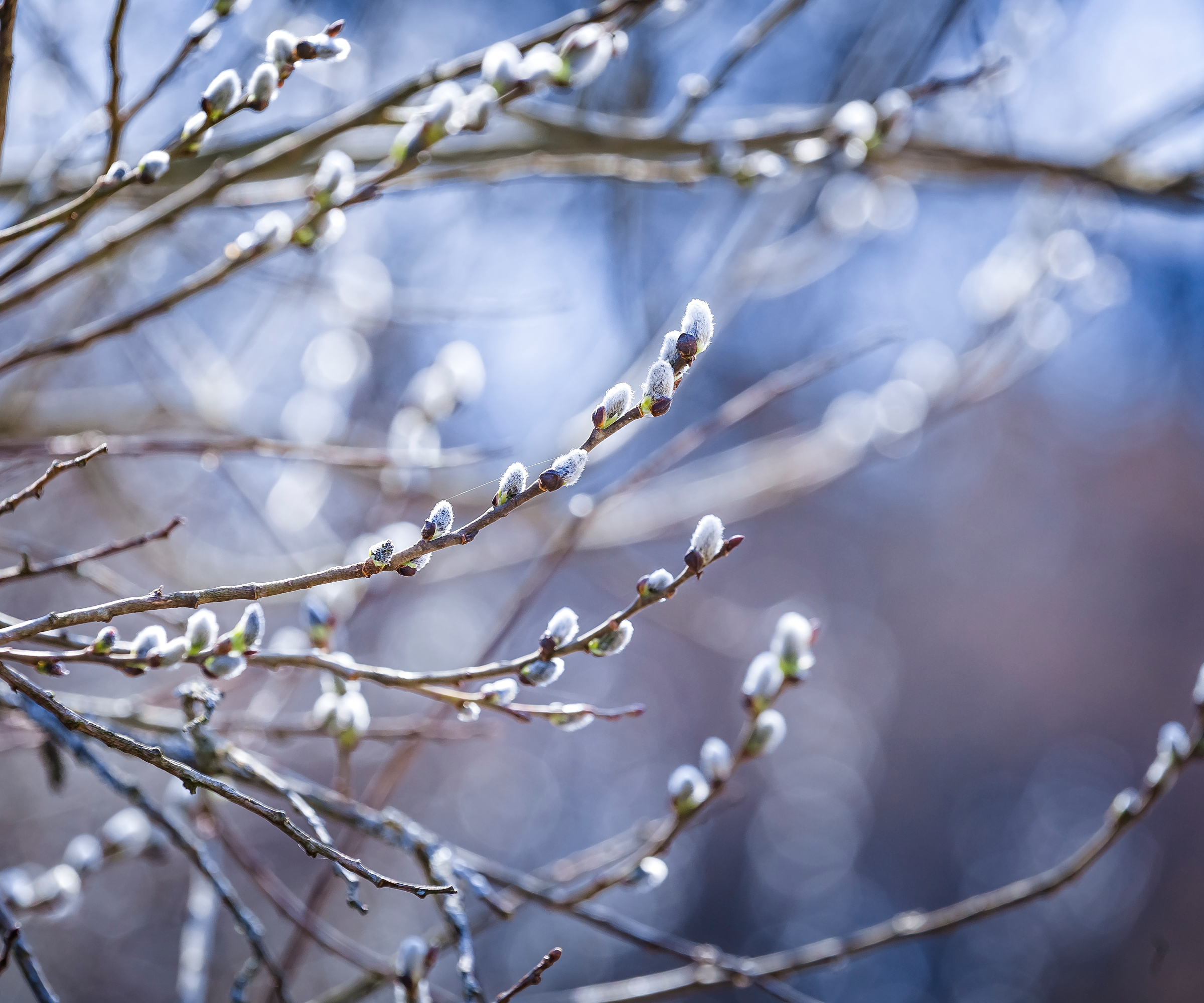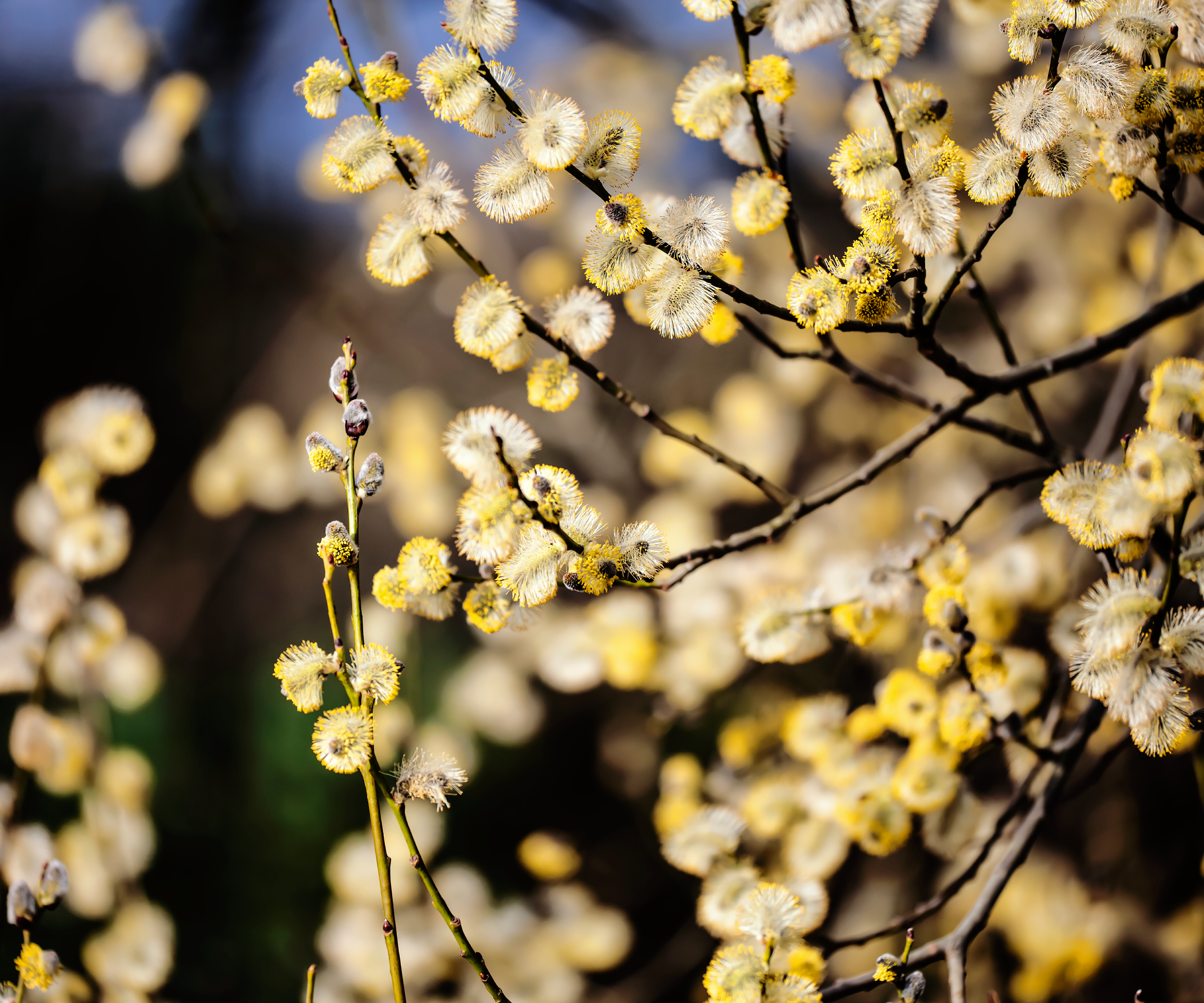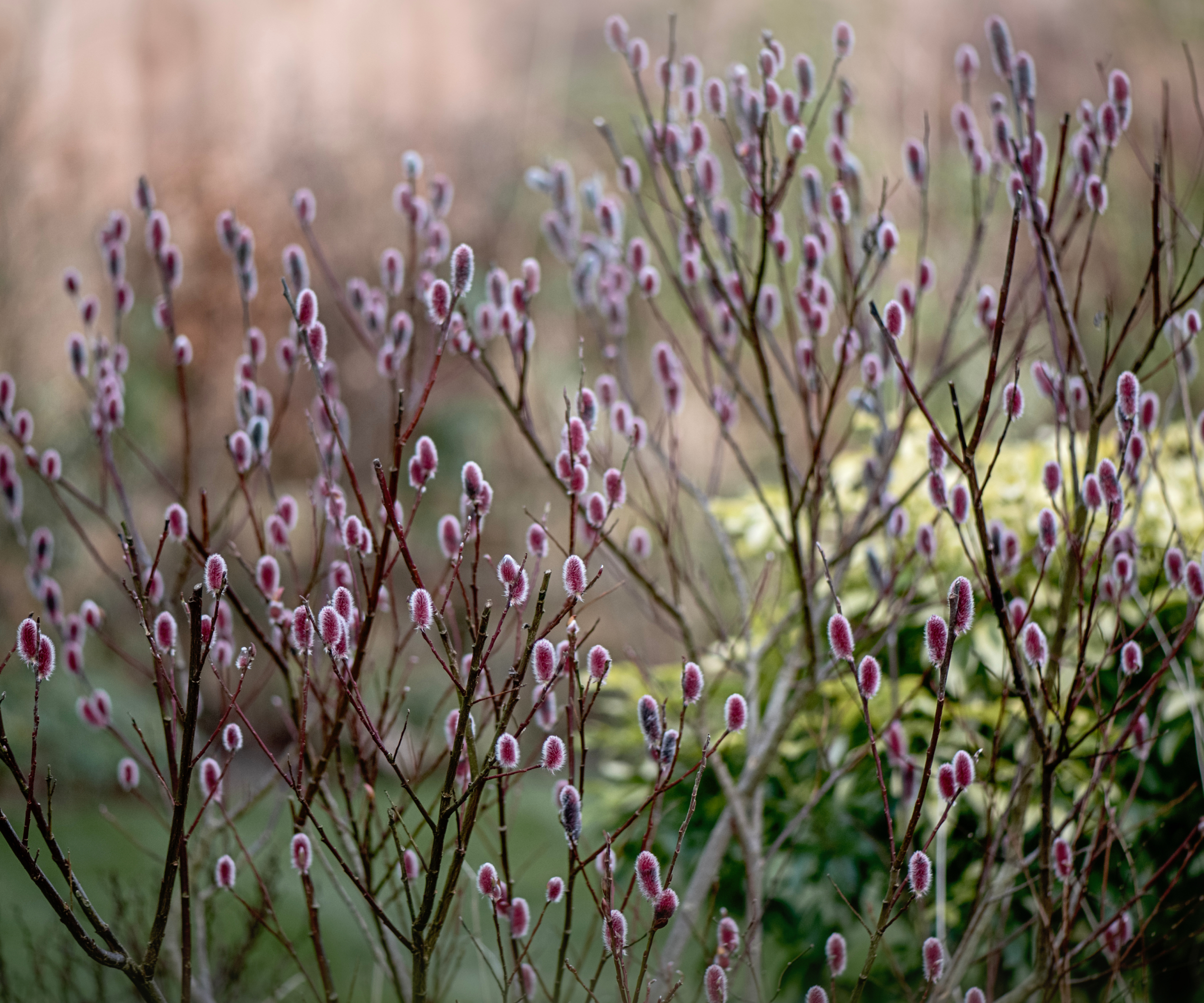Pussy Willow Growing Guide: Add A Touch Of Softness With These Fuzzy Garden Favorites
Growing a pussy willow tree is about as easy as it gets. This beautiful North American native shrub will add great texture and interest to your garden.


Quick Facts
Botanical name: Salix discolor
Height: 6–25 feet. (2-8 m) tall
Spread: 4–15 feet (1.3 – 5m) wide
Sun exposure: Full sun or partial sun
Soil requirements: Wet but well-draining
Hardiness zones: USDA 2-8
When to plant: Spring or fall
All of my favorite plants seem to have one endearing feature that wins my heart. I love the gingko’s fan shaped leaves, the poke weed’s amazing blossoms, and the pussy willow’s fuzzy catkins. Pussy willows are such survivors, and you can’t help but admire their urgent desire to live. Just try cutting some branches in spring for a pussy willow bouquet in water – before a few days pass, they will develop roots! And if you fell an established tree, new shoots will form all around the stump.
Given the shrub’s extreme enthusiasm for life, it goes without saying that care and feeding of a pussy willow bush is not extremely demanding. How to care for pussy willow shrubs? Once your pussy willow tree is established, your main issue will be keeping it from taking up too much of your landscape. Little hands-on care is required other than irrigation.
Pussy Willow Care

If there ever was a plant part that seems to deserve the term “catkin,” it would be the pussy willow. Soft, gray and fuzzy, pussy willows are named after their resemblance to a kitty. So yes, they are catkins and they are also flowers about to bloom. All that soft fuzz insulates the flowers-to-come from winter’s worst.
The botanical name of the pussy willow species of shrub is Salix discolor, and it’s a small ornamental tree or shrub found in moist terrain across the North American continent. But they’re not the only ones to boast fuzzy catkins; almost all common willow tree varieties have similar blooms that arrive in early spring. In fact, like the red robin and the daffodil, pussy willows signal the final days of winter.
Light
The pussy willow shrub needs sun. They are tolerant however, and will accept full sun – six hours a day or more of direct sunlight – or partial sun – between two and six hours a day of sun.
Water
These are water-loving plants and are often found in the wild in wetlands. They require plenty of water. Their shallow roots spread far and wide and like regular drinks. Their ideal setting might be beside a lake or river.
Temperature & Humidity

The willow in general is tolerant – growing almost everywhere regardless of hardiness zones, but officially it survives in USDA zones 2 – 8. It doesn’t appreciate hot weather, but the more humidity, the better.
Sign up for the Gardening Know How newsletter today and receive a free copy of our e-book "How to Grow Delicious Tomatoes".
Soil
In keeping with their water-loving ways, pussy willows prefer moist loam for soil, though it needs to drain well. Try not to plant your pussy willow near water lines, sewer lines, or septic tank fields as it can cause damage with its deep-reaching root system. This root system is great for holding soil on a hill and erosion control in troublesome areas.
Fertilizer
Pussy willow shrubs and trees are native to the North American continent. They grow fast and furiously without any fertilizer at all.
Problems, Pests & Diseases
Watch out for those roots! They easily clog sewers and drains. You can also plant a pussy willow in a pot to avoid any problems with water lines or overly aggressive growth. While these plants are quite healthy and resist pests, occasionally you’ll see aphids, caterpillars, or powdery mildew.
Pruning

If you want to give your pussy willow a haircut, go right ahead. Learning how to prune a pussy willow tree is straight forward. They grow very fast and will accept severe pruning once they have flowered. To keep a potted plant looking its best, prune out dead or broken stems and wilted leaves.

Find the perfect pruning and trimming set in the Gardening Know How Shop to make pussy willow maintenance easy.
Propagation
Each of those little catkins turns into a trove of willow seeds, which is how Mother Nature takes care of propagation. This will probably provide you with more pussy willows than you know what to do with. However, rooting cuttings of pussy willow branches is extremely easy as willows contain a natural rooting hormone. After you are finished rooting your willow branch in water, you can actually use that leftover water to help root other plants!
Repotting
Pussy willows can be grown in large pots. If you want to repot them, select a large container with lots of drain holes. Use regular potting soil. Add some potting soil to the new container, remove the plant from the old container and center it in the new one. Work more soil around the edges. Remember that potted plants always require more water than those in the ground.
Varieties

While you’ll find a number of willow plants that bear fuzzy catkins, only a few are varieties that bear the common name “pussy willow.” They include:
Salix discolor - The North American native plant.
Salix chaenomeloides - Japanese pussy willow which features pink catkins.
Salix capre – A pussy willow native to Eurasia.
Saliz caprea ‘Pendula’ – A variety of Eurasian pussy willow that is weeping instead of an upright bush and is used for ground cover.
Frequently Asked Questions
Are there male and female plants?
Yes, a pussy willow is either male or female. Here’s a shocker: only the male plants bear the beloved fuzzy catkin. Females have small, drab catkins.
Why are my pussy willow leaves turning yellow?
This is usually a sign that the plant needs more sun. Trim off branches of nearby trees that are shading them.
Do pussy willows support wildlife?
Yes they do. They host the larvae of the Viceroy butterfly and provide pollen to many kinds of bees.
Do pussy willow catkins appear before or after the shrubs leaf out?
The silky gray male catkins and the greenish female catkins appear on male and female shrubs respectively before the leaves appear. Not seeing many catkins? Get more catkins on pussy willows by pruning this year's plants just after the catkins begin to fade.
This article features products available from third-party vendors in the Gardening Know How Shop.

Teo Spengler is a master gardener and a docent at the San Francisco Botanical Garden, where she hosts public tours. She has studied horticulture and written about nature, trees, plants, and gardening for more than two decades, following a career as an attorney and legal writer. Her extended family includes some 30 houseplants and hundreds of outdoor plants, including 250 trees, which are her main passion. Spengler currently splits her life between San Francisco and the French Basque Country, though she was raised in Alaska, giving her experience of gardening in a range of climates.